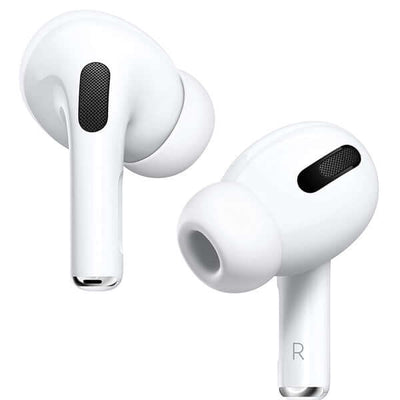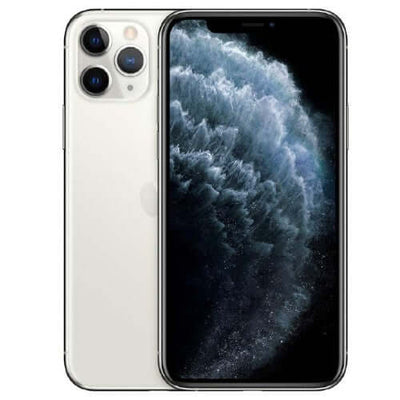Introduction
Today, let's delve into the exciting world of Apple's cutting-edge processors – the Apple M3 Pro and the Apple M1 Max. These chips represent the pinnacle of innovation in the tech giant's lineup, tailored for specific needs within the MacBook Pro series. Whether you're a tech enthusiast, a creative professional, or just someone in search of a reliable computing powerhouse, understanding the nuances between these two processors is paramount in making an informed decision.
The comparison between the Apple M3 Pro and M1 Max isn't just about raw numbers; it's about deciphering how each chip can elevate your user experience. We'll unpack their features, performance metrics, and focus areas to give you a comprehensive view, empowering you to select the ideal processor for your unique requirements.
So, join us as we embark on a journey to uncover the distinctions and parallels between the Apple M3 Pro and Apple M1 Max processors, guiding you towards the perfect choice for your computing endeavors.
Performance
When it comes to selecting a device, the performance of its processor holds utmost importance. Let's delve into a comparison between the clock speed and core configuration of two remarkable processors: the Apple M3 Pro and the Apple M1 Max.
• Apple M3 Pro
The Apple M3 Pro packs a punch with its impressive clock speed and robust core setup. Boasting a clock speed and a core configuration, it's designed to handle even the most demanding tasks efficiently. This combination ensures smooth performance and responsiveness, catering to various user needs.
• Apple M1 Max
Taking performance up a notch, the Apple M1 Max offers enhanced capabilities. With a higher clock speed of and a more advanced core configuration, the M1 Max sets a new standard. Its increased power translates to exceptional speed and efficiency, making it ideal for intensive workloads and demanding applications.
• Benchmark Scores and Real-World Performance
To truly gauge their prowess, both the Apple M3 Pro and Apple M1 Max have undergone rigorous benchmark testing. These standardized tests offer valuable insights into their performance capabilities.
According to benchmark results, the M1 Max surpasses the M3 Pro across various metrics. Thanks to its superior clock speed and core configuration, the M1 Max achieves higher scores in both single-core and multi-core tests, indicating superior overall performance.
In real-world usage scenarios, the M1 Max excels in multitasking and handling resource-intensive tasks with ease. Whether it's complex video editing or 3D rendering, the M1 Max delivers exceptional performance without sacrificing speed or efficiency.
Whether you're a professional seeking unparalleled performance or a user who values seamless multitasking, the Apple M1 Max stands out as a powerhouse that can handle anything thrown its way.
In summary, while the Apple M3 Pro holds its own in terms of performance, the Apple M1 Max raises the bar. With its impressive clock speed, advanced core configuration, and stellar benchmark scores, the M1 Max emerges as the ultimate choice for those seeking top-tier performance in their MacBook Pro.
Graphics Capabilities Comparison
When we delve into the realm of graphics capabilities, both the Apple M3 Pro and Apple M1 Max truly shine, catering to a diverse array of applications and needs.
• Apple M3 Pro
Let's start with the Apple M3 Pro. This powerhouse boasts a formidable GPU that doesn't disappoint when it comes to delivering smooth, high-performance graphics. Thanks to its advanced architecture and impressive clock speeds, it effortlessly tackles graphically demanding tasks. Whether you're fine-tuning high-resolution images or immersing yourself in graphics-rich gaming worlds, the M3 Pro ensures a seamless and satisfying experience.
• Apple M1 Max
Now, let's turn our attention to the Apple M1 Max, which takes graphics performance to exhilarating new heights. Sporting an even more potent GPU, it's primed to handle the most demanding tasks with aplomb. Armed with an advanced architecture and an increased core count, the M1 Max breezes through complex 3D rendering, video editing, and gaming sessions without breaking a sweat.
• Comparing Graphics Performance
When we pit the graphics performance of the Apple M3 Pro against that of the M1 Max, it becomes evident that the latter holds a distinct advantage. With its higher clock speed and augmented core count, the M1 Max delivers swifter rendering, smoother animations, and more lifelike visuals. Whether you're a seasoned professional navigating graphics-intensive applications or a dedicated gamer seeking unparalleled gaming thrills, the M1 Max emerges as the undisputed champion.
• Support for High-End Gaming and Professional Applications
Both the Apple M3 Pro and M1 Max offer stellar support for high-end gaming and professional-grade applications. They effortlessly tackle the most demanding games and graphics-intensive software, ensuring uncompromising performance across the board. Whether you're a content creator, a design aficionado, or a gaming enthusiast, these processors empower you to unleash your creativity and revel in a seamless gaming experience.
In conclusion, while both the Apple M3 Pro and M1 Max boast impressive graphics capabilities, it's the M1 Max that steals the spotlight with its unparalleled performance. Whether you're a seasoned professional or an avid gamer, the M1 Max emerges as the ultimate choice, delivering top-of-the-line graphics performance that's second to none in the MacBook Pro lineup.
Power Efficiency
Let's delve into the realm of power efficiency, a critical factor when comparing processors, especially concerning their impact on device performance. Here's a breakdown of how the Apple M3 Pro and Apple M1 Max stack up in terms of power efficiency.
• **Power Consumption of Apple M3 Pro**
The Apple M3 Pro is engineered to strike a delicate balance between performance and power efficiency. Leveraging an optimized architecture and savvy power management features, it excels in consuming power judiciously while still delivering commendable performance. This makes it a prime pick for users who value extended battery life without sacrificing speed and responsiveness.
• **Power Consumption of Apple M1 Max**
Now, let's turn our attention to the Apple M1 Max, a champion of power efficiency. Harnessing cutting-edge design principles, including Apple's groundbreaking 5nm process technology, it manages to achieve exceptional performance while sipping power conservatively. This translates into prolonged battery life and diminished heat output, rendering it an optimal choice for tackling demanding tasks and resource-hungry applications.
• **Battery Life and Thermal Management**
The power efficiency of a processor holds significant sway over a device's battery life. Thanks to its frugal power consumption, the Apple M3 Pro boasts a respectable battery lifespan, granting users ample time for work or entertainment before needing a recharge.
Meanwhile, the Apple M1 Max elevates the game with its superior power management prowess, further elongating battery longevity. By intelligently allocating power across various components, it optimizes energy usage to maximize usage duration on a single charge. Moreover, the M1 Max flaunts an advanced thermal management system, ensuring that the device stays cool even under hefty workloads, thereby mitigating the risk of overheating and performance degradation.
• **Impact on Overall Device Performance**
Power efficiency serves as a linchpin for overall device performance. With its refined power consumption, the Apple M3 Pro delivers a seamless and responsive user experience, effortlessly handling day-to-day tasks and moderate workloads.
On the flip side, the Apple M1 Max redefines the boundaries of device performance with its exceptional power efficiency. It blazes through tasks with lightning-fast speeds and tackles intensive operations like video editing, 3D rendering, and AI processing with aplomb. Users can anticipate a fluid multitasking experience and heightened productivity levels.
In summary, both the Apple M3 Pro and Apple M1 Max showcase commendable power efficiency, contributing to extended battery life and optimal device performance. While the M3 Pro strikes a fine balance between performance and power consumption, the M1 Max raises the bar, making it the go-to choice for users seeking top-tier performance and enduring battery life in their MacBook Pro.
Connectivity and Features
When you're comparing the Apple M3 Pro and Apple M1 Max processors, one of the key factors to consider is the connectivity they offer and the unique features that make each stand out.
• Let's start with the ports and connectivity options on the Apple M3 Pro. This processor comes equipped with:
- Two Thunderbolt 3 ports, which are great for fast data transfer and hooking up external displays.
- A USB 4 port that allows you to connect various peripherals.
- An HDMI 2.0 port for linking up with external monitors or TVs.
- Of course, there's a headphone jack for your audio needs.
- Plus, a handy SDXC card slot for easy file transfers.
• Now, let's take a look at what the Apple M1 Max brings to the table in terms of connectivity:
- It steps up the Thunderbolt game with three Thunderbolt 4 ports, offering even faster data transfer and support for multiple external displays.
- Like the M3 Pro, it also features an HDMI 2.0 port for connecting to external monitors or TVs.
- You've got the headphone jack for audio, as expected.
- But what's particularly cool is the inclusion of the MagSafe 3 port, which not only handles charging but also connects to compatible accessories.
- And of course, it still comes with the trusty SDXC card slot for file transfers.
• Now, let's talk about the unique features of each processor.
The Apple M3 Pro boasts an integrated Neural Engine, which really amps up its machine learning capabilities. This means tasks like image and speech recognition happen even faster. Plus, it supports Wi-Fi 6 for speedier wireless connections.
On the flip side, the Apple M1 Max packs a punch with its advanced GPU architecture, making it a powerhouse for graphics-intensive tasks like video editing and gaming. It also introduces Apple's latest Secure Enclave technology, beefing up device security.
When it comes to compatibility with external devices and peripherals, both processors have you covered. Whether it's external displays, cameras, printers, or storage devices, you can count on both the M3 Pro and M1 Max to seamlessly connect and integrate.
In summary, both the Apple M3 Pro and Apple M1 Max offer a solid array of ports and connectivity options, ensuring they can play nice with a wide range of devices and peripherals. While the M3 Pro covers the essentials, the M1 Max goes the extra mile with additional Thunderbolt 4 and MagSafe 3 ports, not to mention its beefed-up GPU and enhanced security features.
Conclusion
In wrapping up, let's break down the comparison between the Apple M3 Pro and Apple M1 Max processors, focusing on their performance, graphics capabilities, power efficiency, and connectivity options.
First off, if you're after sheer powerhouse performance, especially for heavy-duty professional tasks, the Apple M1 Max takes the crown. Its impressive clock speed, advanced core setup, and stellar benchmark results make it the go-to choice.
Now, for those who need exceptional graphics performance, like for video editing or gaming, again, the Apple M1 Max shines. With its beefed-up GPU, higher clock speed, and more cores, it delivers smoother animations, faster rendering, and lifelike visuals.
But, if you're someone who wants a balance between performance and battery life, without sacrificing too much power, the Apple M3 Pro steps in. Its optimized power usage and efficient management make it great for everyday tasks and moderate workloads.
When it comes to connectivity and features, both processors offer a bunch of ports and compatibility with external devices. However, the M1 Max steps it up with additional Thunderbolt 4 and MagSafe 3 ports, plus some advanced GPU architecture and security features.
Looking forward, Apple's likely to keep pushing the processor envelope, introducing even more advanced chips. So, expect future updates that ramp up performance, graphics, efficiency, and connectivity.
In the end, whether you're a power-hungry pro, a graphics-savvy creative, or someone who needs a good mix of power and efficiency, both the Apple M3 Pro and Apple M1 Max have you covered. Just think about your specific needs to decide which one's best for your MacBook Pro.
So, if you're after a blend of power and efficiency, go for the Apple M3 Pro. But if you want the absolute top-notch performance and graphics, the M1 Max is the way to go. Either way, you're in for some serious Apple-powered goodness!
Now, go ahead, make your pick, and enjoy the impressive performance these processors bring to the table!
Frequently Asked Questions
We've compiled some common inquiries regarding the Apple M3 Pro and Apple M1 Max processors:
Q1: Which processor is better for professional video editing?
A: If you're diving into professional video editing, the Apple M1 Max takes the lead. With its superior performance, higher clock speed, and advanced core setup, it smoothly tackles demanding editing tasks, ensuring a responsive experience.
Q2: Can both processors handle 3D rendering effectively?
A: Absolutely. Both the Apple M3 Pro and Apple M1 Max processors excel at 3D rendering tasks. Yet, the M1 Max edges ahead thanks to its more robust GPU architecture, higher clock speed, and increased core count, delivering quicker rendering.
Q3: Does the Apple M1 Max outshine the M3 Pro in power efficiency?
A: Indeed, the Apple M1 Max boasts better power efficiency compared to the M3 Pro. Its innovative design, leveraging Apple's latest 5nm process technology, offers stellar performance while consuming less power, resulting in longer battery life and reduced heat output.
Q4: Are there notable differences in connectivity options between the two?
A: Both the Apple M3 Pro and Apple M1 Max provide a variety of connectivity options. However, the M1 Max goes the extra mile with additional Thunderbolt 4 and MagSafe 3 ports, ensuring faster data transfer and support for multiple external displays. It also boasts an advanced GPU architecture and enhanced security features.
Q5: Can I upgrade my existing MacBook's processor to either of these?
A: Unfortunately, no. You cannot upgrade your current MacBook's processor to either the Apple M3 Pro or Apple M1 Max. These processors are tailored specifically for the new MacBook Pro models and aren't compatible with older iterations.





















